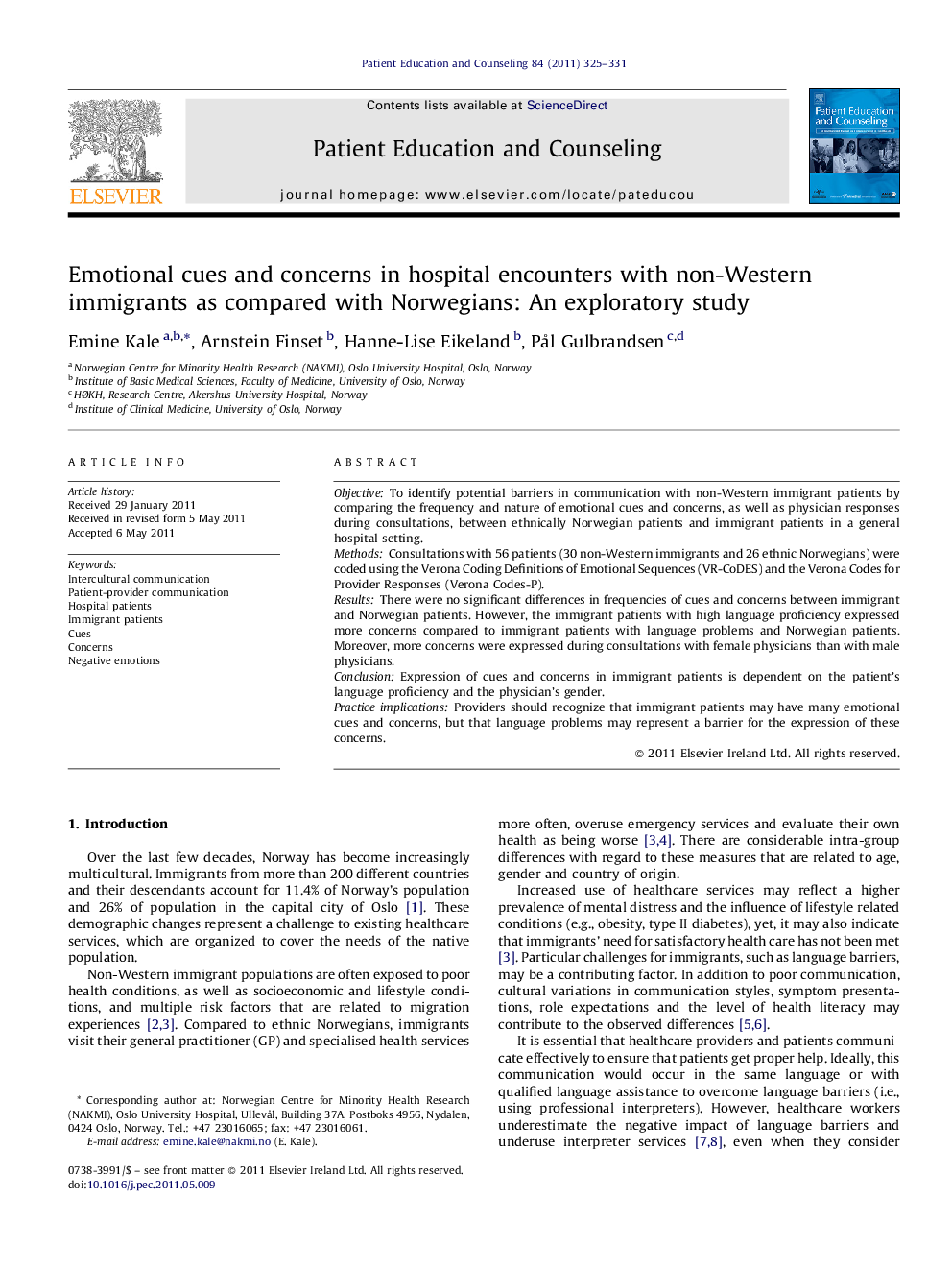| کد مقاله | کد نشریه | سال انتشار | مقاله انگلیسی | نسخه تمام متن |
|---|---|---|---|---|
| 3814335 | 1246009 | 2011 | 7 صفحه PDF | دانلود رایگان |

ObjectiveTo identify potential barriers in communication with non-Western immigrant patients by comparing the frequency and nature of emotional cues and concerns, as well as physician responses during consultations, between ethnically Norwegian patients and immigrant patients in a general hospital setting.MethodsConsultations with 56 patients (30 non-Western immigrants and 26 ethnic Norwegians) were coded using the Verona Coding Definitions of Emotional Sequences (VR-CoDES) and the Verona Codes for Provider Responses (Verona Codes-P).ResultsThere were no significant differences in frequencies of cues and concerns between immigrant and Norwegian patients. However, the immigrant patients with high language proficiency expressed more concerns compared to immigrant patients with language problems and Norwegian patients. Moreover, more concerns were expressed during consultations with female physicians than with male physicians.ConclusionExpression of cues and concerns in immigrant patients is dependent on the patient's language proficiency and the physician's gender.Practice implicationsProviders should recognize that immigrant patients may have many emotional cues and concerns, but that language problems may represent a barrier for the expression of these concerns.
Journal: Patient Education and Counseling - Volume 84, Issue 3, September 2011, Pages 325–331